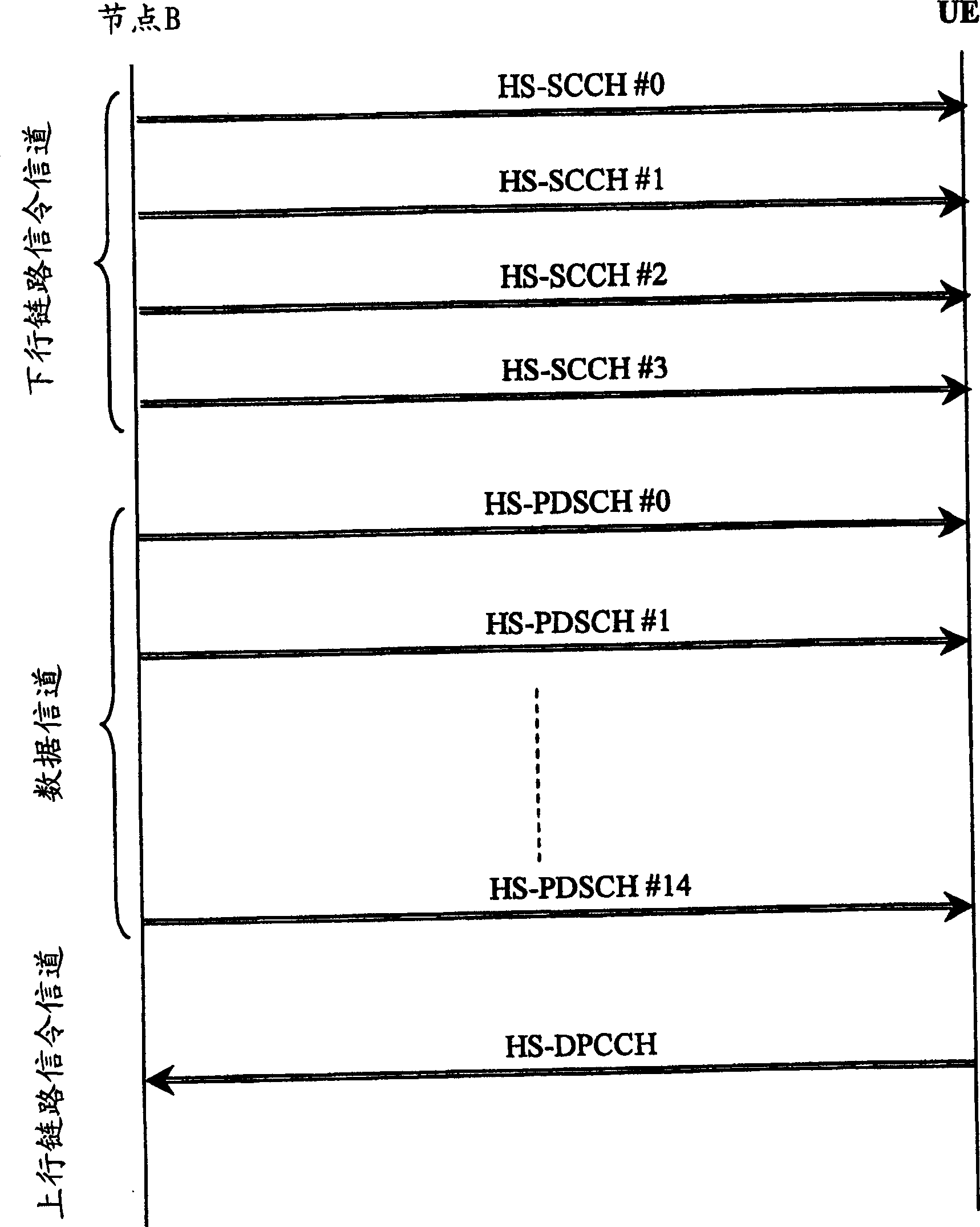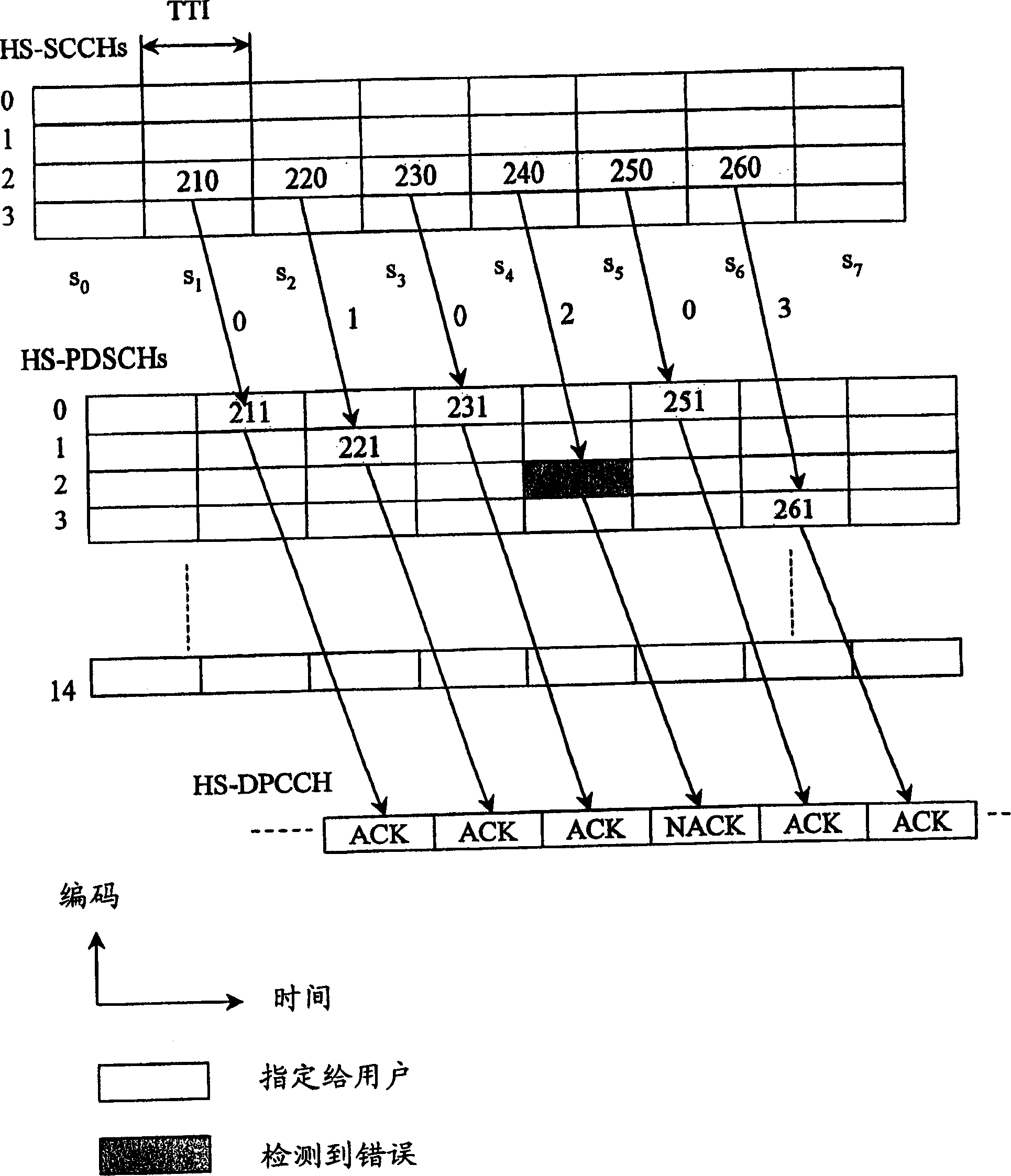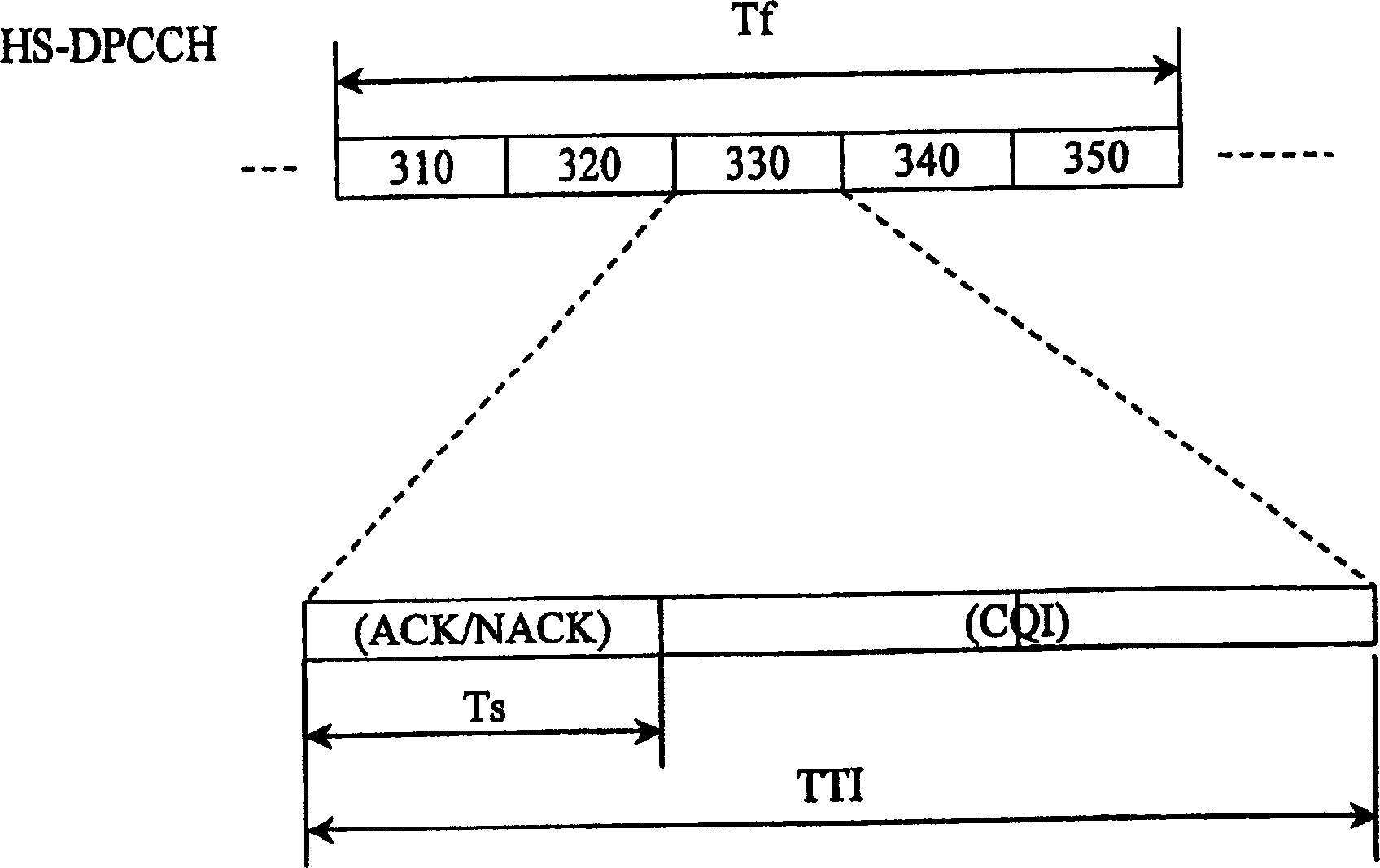Method for reporting transmitting channel quality between transmitter and receiver
A transmission channel and transmitter technology, applied in the communication between multiple stations, transmission modification based on link quality, transmission system, etc., can solve the problem of increased packet error rate, increased interference level, and inability to correct transmission parameters, etc. question
- Summary
- Abstract
- Description
- Claims
- Application Information
AI Technical Summary
Problems solved by technology
Method used
Image
Examples
no. 1 example
[0021] Figure 5 Schematically represents the process of reporting channel quality information according to the first embodiment of the present invention;
[0022] Fig. 6 schematically shows the process of reporting channel quality information according to the second embodiment of the present invention.
[0023] We still refer here to a telecommunication system in which: the sender (Node B) transmits a data subframe over a transport channel, and the receiver (UE) sends a negative acknowledgment (NACK) back to the subframe when it finds an error in the received subframe The sender sends an acknowledgment (ACK) when it finds that the received subframe has no errors. For example, the telecommunication system in question may be a UMTS telecommunication system in which mobile terminals are equipped with HSDPA access. It is also assumed below that the receiver reports information to the sender indicating its estimated transmission channel quality at a predetermined scheduled time....
PUM
 Login to View More
Login to View More Abstract
Description
Claims
Application Information
 Login to View More
Login to View More - R&D
- Intellectual Property
- Life Sciences
- Materials
- Tech Scout
- Unparalleled Data Quality
- Higher Quality Content
- 60% Fewer Hallucinations
Browse by: Latest US Patents, China's latest patents, Technical Efficacy Thesaurus, Application Domain, Technology Topic, Popular Technical Reports.
© 2025 PatSnap. All rights reserved.Legal|Privacy policy|Modern Slavery Act Transparency Statement|Sitemap|About US| Contact US: help@patsnap.com



